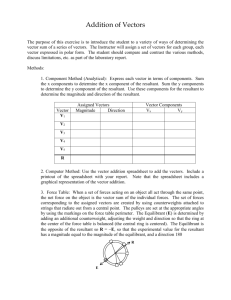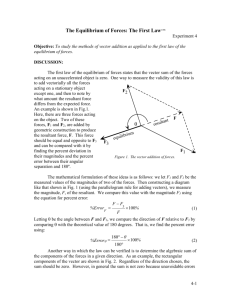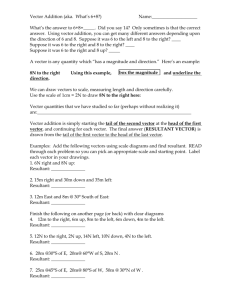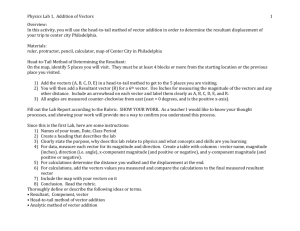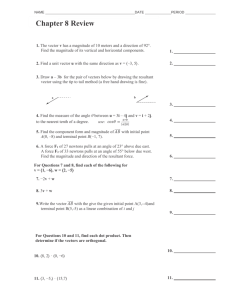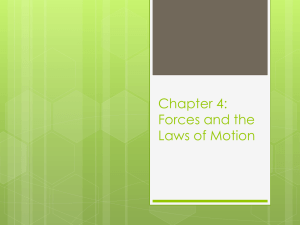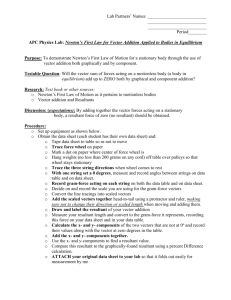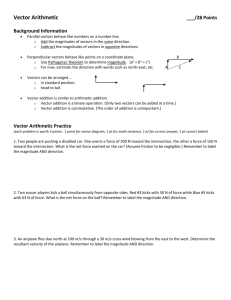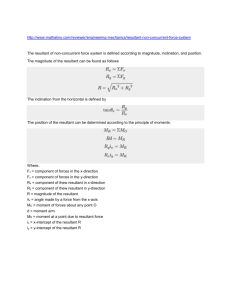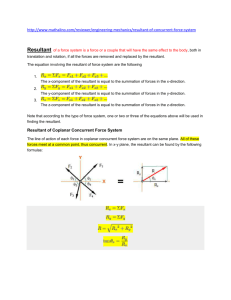Vector Lab
advertisement
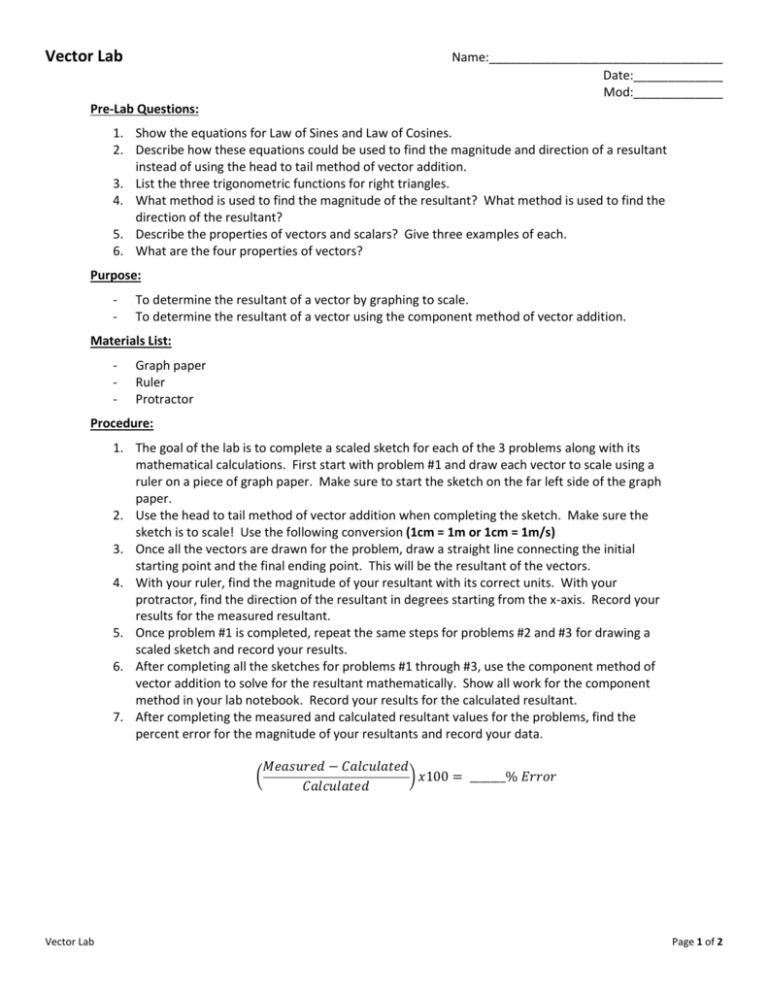
Vector Lab Name:__________________________________ Date:_____________ Mod:_____________ Pre-Lab Questions: 1. Show the equations for Law of Sines and Law of Cosines. 2. Describe how these equations could be used to find the magnitude and direction of a resultant instead of using the head to tail method of vector addition. 3. List the three trigonometric functions for right triangles. 4. What method is used to find the magnitude of the resultant? What method is used to find the direction of the resultant? 5. Describe the properties of vectors and scalars? Give three examples of each. 6. What are the four properties of vectors? Purpose: - To determine the resultant of a vector by graphing to scale. To determine the resultant of a vector using the component method of vector addition. Materials List: - Graph paper Ruler Protractor Procedure: 1. The goal of the lab is to complete a scaled sketch for each of the 3 problems along with its mathematical calculations. First start with problem #1 and draw each vector to scale using a ruler on a piece of graph paper. Make sure to start the sketch on the far left side of the graph paper. 2. Use the head to tail method of vector addition when completing the sketch. Make sure the sketch is to scale! Use the following conversion (1cm = 1m or 1cm = 1m/s) 3. Once all the vectors are drawn for the problem, draw a straight line connecting the initial starting point and the final ending point. This will be the resultant of the vectors. 4. With your ruler, find the magnitude of your resultant with its correct units. With your protractor, find the direction of the resultant in degrees starting from the x-axis. Record your results for the measured resultant. 5. Once problem #1 is completed, repeat the same steps for problems #2 and #3 for drawing a scaled sketch and record your results. 6. After completing all the sketches for problems #1 through #3, use the component method of vector addition to solve for the resultant mathematically. Show all work for the component method in your lab notebook. Record your results for the calculated resultant. 7. After completing the measured and calculated resultant values for the problems, find the percent error for the magnitude of your resultants and record your data. 𝑀𝑒𝑎𝑠𝑢𝑟𝑒𝑑 − 𝐶𝑎𝑙𝑐𝑢𝑙𝑎𝑡𝑒𝑑 ( ) 𝑥100 = _______% 𝐸𝑟𝑟𝑜𝑟 𝐶𝑎𝑙𝑐𝑢𝑙𝑎𝑡𝑒𝑑 Vector Lab Page 1 of 2 Problems: Problem #1: - A = 10.4 m/s @ 0° B = 8.0 m/s @ 45° Problem #2: - A = 7.0 m @ 0° B = 3.5 m @ 45° C = 5.0 m @ 90° Problem #3: - A = 8.0 m @ 0° B = 5.6 m @ 45° C = 3.0 m @ 90° D = 2.5 m @ 145° Post-Lab Questions: Problem #1: - Calculated Resultant: ______________@_________ - Measured Resultant:_______________@_________ - Percent Error: _____________ % Error Problem #2: - Calculated Resultant: ______________@_________ - Measured Resultant:_______________@_________ - Percent Error: _____________ % Error Problem #3: Vector Lab - Calculated Resultant: ______________@_________ - Measured Resultant:_______________@_________ - Percent Error: _____________ % Error Page 2 of 2

